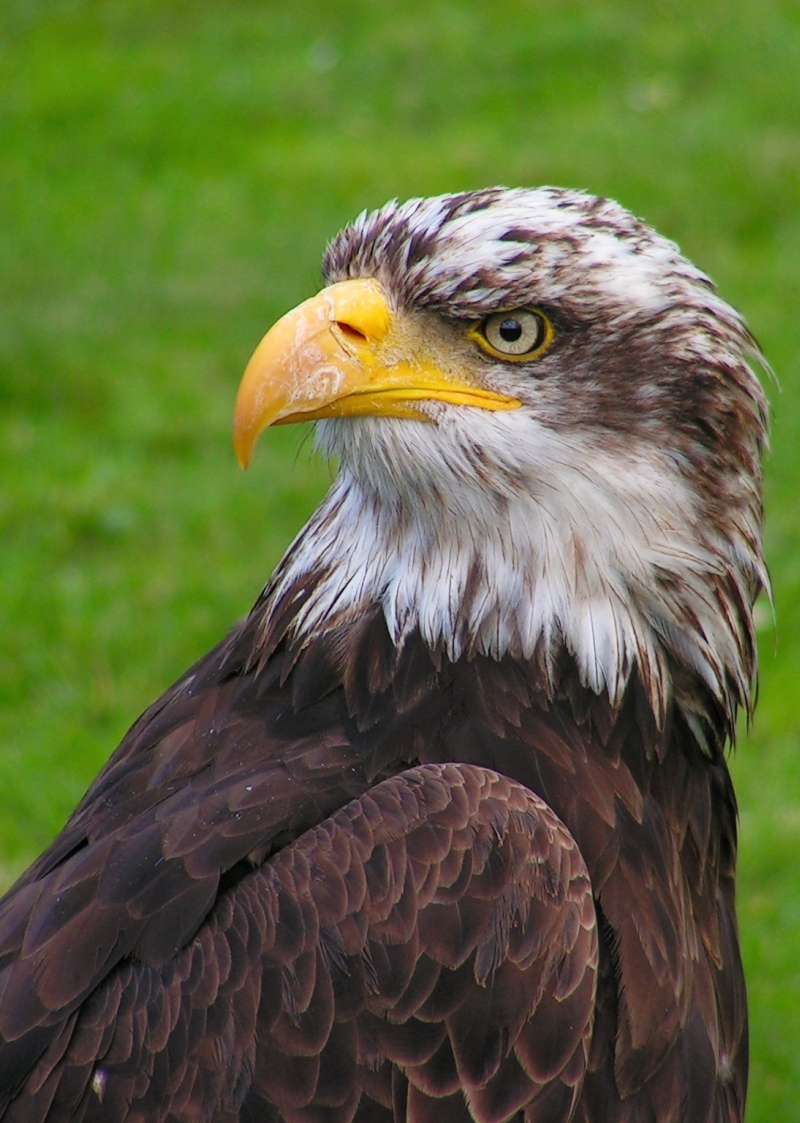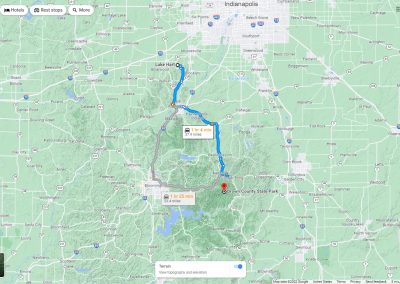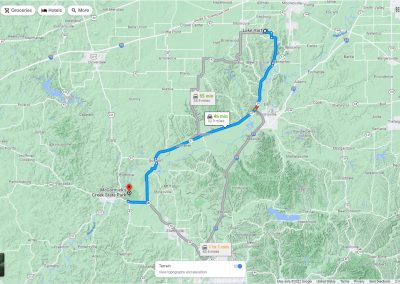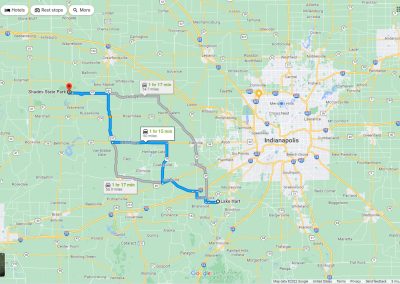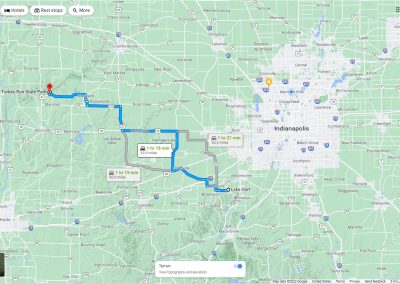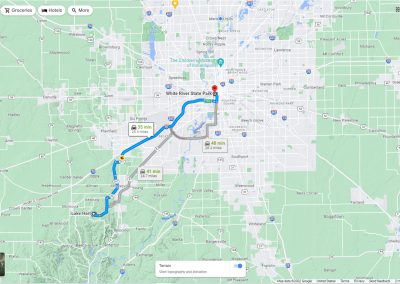Homes and Land Gallery
Indiana State Parks Nearest Lake Hart
There are five Indiana State Parks within an hour and a half one-way of Lake Hart. In alphabetical order they are Brown County State Park, McCormick’s Creek State Park, Shades State Park, Turkey Run State Park, and White River State Park.
Brown County State Park
Brown County State Park is by far the largest of 24 state parks in Indiana, and occupies 15,776 acres (63.84 km2)—making it one of the larger state parks in the United States. It is Indiana’s most visited state park, and has about 1.3 million visitors each year. Although Bloomington, Indiana, is the closest city, the park is closer to the small town of Nashville in Brown County. Brown County is named for General Jacob Brown, who fought in the War of 1812 and became Commanding General of the United States Army.
The park opened in 1929, and was dedicated in 1932 as a memorial to Indiana humorist Frank McKinney “Kin” Hubbard. Although Hubbard lived and worked in Indianapolis, he was a frequent visitor to Nashville and the surrounding woods. The park’s Abe Martin Lodge is named after Hubbard’s fictional backwoodsmen character used to convey Hubbard’s humor and witticisms.
Brown County and its park are known for their scenic views of the hills of southern Indiana. Both are the home of a wide variety of trees that attract visitors each year when the vegetation transforms to its autumn colors. The park also contains many trees that flower in the springtime. Visitors will find a rustic atmosphere, enhanced by an infrastructure that was mostly constructed by the Civilian Conservation Corps during the 1930s. In addition to the park’s lodge, cabins can be rented and campsites are available. The park has trails for hiking, biking and horseback riding. It has two lakes for fishing that complement the surrounding forests and provide a water source for the local wildlife. The area’s beauty attracts artists and photographers worldwide. Reference: Wikipedia
McCormick’s Creek State Park
McCormick’s Creek State Park is the oldest state park in the U.S. state of Indiana, dedicated on July 4, 1916, as part of the state’s centennial celebration. It is located 14 miles (23 km) west of Bloomington in Owen County. The park receives about 640,000 visitors annually. The park was named after the area’s first settler, John McCormick, who settled on 100 acres (0.40 km2) there in 1816, along the canyon by the waterfalls. Up to that time, the land had been hunted by Miami Indians. McCormick’s Creek Falls is the main attraction at McCormick’s Creek State Park.
On May 12, 1916, a local newspaper editor suggested to an Indiana state legislator that the McCormick’s Creek area would be a suitable location for a state park. German-born Indianapolis businessman Richard Lieber championed the idea of establishing a system of state parks for Indiana, and, after winning the property at auction with a bid of $5,250, received it from the Dr. Frederick Denkewalter estate. McCormick’s Creek was formally opened on December 11, 1916; the centennial birthday of Indiana. In 1927 a naturalist program was started, a first for Indiana and the United States. Reference: Wikipedia
Shades State Park
Shades State Park is a state park in Montgomery, Parke, and Fountain Counties in Indiana. It is located 47 miles (76 km) west-northwest of Indianapolis, Indiana. In 2018–2019, Shades received nearly 87,000 visitors. In the last decades of the 19th century, the area was a resort with a forty-room inn. In the 1930’s a man named Joseph Frisz acquired the land in order to protect it and purchased more land around. His heirs sold the land in 1947 to the holding company “Save the Shades”, who in turn gave the land to the state to create Indiana’s 15th state park.
Originally, the area was known as the “Shades of Death”. There is debate as to why it got that name. Some say it was due to the way the trees cast their shadow on the ground below, making it look like a black forest. Others say it was because of a settler’s death, although details are unclear and contradictory. Reference: Wikipedia
Turkey Run State Park
Turkey Run State Park, Indiana’s second state park, is in Parke County in the west-central part of the state along State Road 47, 2 miles (3.2 km) east of U.S. 41.
The first parcel of land was purchased for $40,200 in 1916, when Indiana’s state park system was established during the state’s centennial anniversary of its statehood. The origin of the name “Turkey Run” is unknown, but the most accepted theory is that wild turkeys would congregate for warmth in the gorges (or “runs”), where early settlers could easily trap and hunt them.
The Lusk Home and Mill Site and the Richard Lieber Log Cabin within the park’s grounds were included as individual sites on the National Register of Historic Places in 1974 and 2001, respectively. The park itself was listed on the National Register of Historic Places in 2019. Turkey Run also includes a system of trails, Rocky Hollow Falls Canyon Nature Preserve, a suspension bridge across Sugar Creek, camping sites, and other recreational areas. The Turkey Run Inn was built in 1919. Several guest cabins near the inn date from the 1930s and 1940s. The park draws some 700,000 visitors annually. Reference: Wikipedia
White River State Park
White River State Park is an urban park in Downtown Indianapolis, Indiana. Situated along the eastern and western banks of its namesake White River, the park covers 267 acres. Initial plans for the park were conceived by civic leaders in the late-1970s to capitalize on the city’s amateur sports economic development strategy. Bipartisan support from state legislators and seed money from corporate partners led to the organization of a quasi-governmental commission to oversee planning and operations for the park. Construction began in the 1980s with the acquisition and clearing of blighted industrial properties and realignment of Washington Street for redevelopment.
Notable attractions located in the park include the Eiteljorg Museum of American Indians and Western Art, Indiana State Museum, Indianapolis Zoo, Medal of Honor Memorial, NCAA Hall of Champions, Victory Field, and White River Gardens. The park and accompanying Indianapolis Canal Walk comprise one of seven designated cultural districts. Reference: Wikipedia

